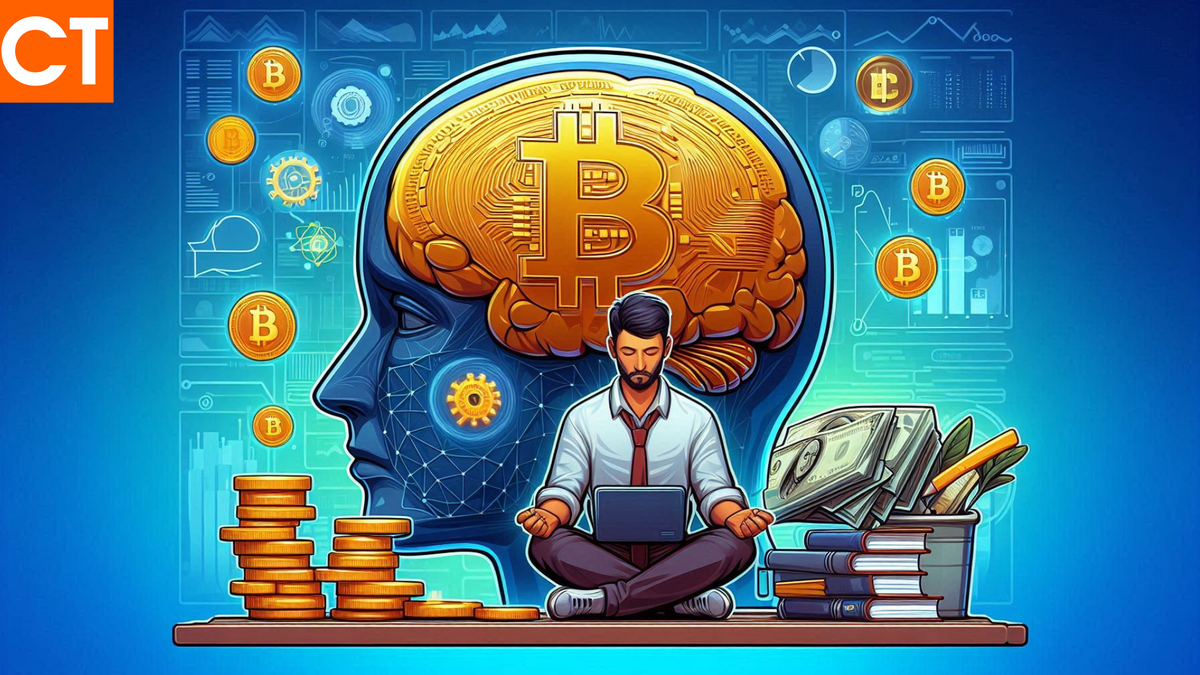Crypto Trading Psychology: Why Patience is the Secret Weapon for Beginners (2025 Guide)

Understanding the Power of Patience in Crypto Trading
In the fast-moving world of crypto, mastering trading psychology is just as important as technical analysis. And among all psychological traits, patience is the most underrated superpower. This guide breaks down the psychology behind patience in trading, backed by behavioral science, real trader stories, and key market examples from 2023 to 2025. Whether you're just starting or trying to fix impulsive habits, you’ll discover how patience can dramatically improve your results.
Table of Contents
- Why Patience Matters in Crypto Trading
- The Psychology Behind Patience: Delayed Gratification & Biases
- Real-Life Examples: Patience vs. Impatience
- How to Build Patience in Your Trading Routine
- Conclusion: Patience Pays in Crypto
Why Patience Matters in Crypto Trading
The crypto market is known for extreme volatility. Prices can surge or crash within minutes, triggering emotional reactions like FOMO or panic-selling. But here’s the truth: most new traders lose money not because of bad strategies, but because they act too quickly.
Research shows that traders who take fewer, more calculated trades perform better than those who react to every market move. Patience allows you to wait for high-probability setups, avoid emotional decisions, and stick to your strategy.
Instead of buying into hype or panic-selling during dips, patient traders observe, plan, and execute with intention. This discipline helps you:
- Avoid buying at peaks
- Prevent selling at the bottom
- Reduce costly overtrading mistakes
The Psychology Behind Patience: Delayed Gratification & Biases
So why is patience so difficult?
🧠 Biology & Behavioral Biases
Humans are wired to prefer instant rewards. This bias is known as temporal discounting, the tendency to devalue future outcomes. It’s the same principle behind the famous “marshmallow test” in psychology.
In trading, this shows up as:
- Taking small profits early instead of letting trades grow
- Selling during small dips to avoid discomfort
- Jumping into hype trades to avoid missing out
Common cognitive biases that sabotage your patience:
- FOMO (Fear of Missing Out): Chasing hype instead of waiting for a setup
- Loss Aversion: Selling quickly to “stop the pain,” even if it’s temporary
- Overconfidence: A few lucky wins may lead to risky, impatient behavior
- Confirmation Bias: Seeking data that supports impulsive actions
📉 Data-Backed Reality: A study of 66,000 investors found that frequent traders underperformed by 6.5% compared to long-term holders. Why? Because impatience leads to bad entries, poor exits, and unnecessary fees.
Real-Life Examples: Patience vs. Impatience in Action
✅ Patience Pays: The Bitcoin HODLers’ Win
After Bitcoin hit ~$20,000 in 2017, it crashed to ~$3,200 by late 2018. Many beginners panic-sold. But patient holders saw Bitcoin soar to $69,000 in 2021, and again to $80k–$100k in 2024.
- Buying at $3k and holding to $69k = over 20x gains
- Even buying near $20k and holding = 3x gains
- Lesson: Patience through market cycles pays long-term
❌ Impatience Hurts: Dogecoin & FOMO Traps
During the 2021 Dogecoin frenzy, many bought near the top at ~$0.70 due to hype. Then came a crash after Elon Musk’s SNL appearance—DOGE dropped 30% overnight. Many panic-sold at a loss.
- Buying in late = bad entry
- Selling during fear = bad exit
- Lesson: Chasing hype and reacting emotionally often ends badly
How to Build Patience in Your Trading Routine
🧭 1. Have a Clear Trading Plan
“Trade the plan, not your emotions.”
Before placing any trade, set clear rules for when you’ll enter, how you’ll manage the trade, and under what conditions you’ll exit—whether in profit or loss.
Your plan should include:
- Entry criteria (e.g., a specific price level or chart setup)
- Stop-loss level (to cap your downside risk)
- Take-profit targets (to lock in gains)
- Risk-reward ratio (ideally 1:2 or better)
This structure gives you confidence and clarity. Without a plan, you’ll be tempted to act on emotions or market noise. Remember, if your setup isn’t there, don’t force the trade—discipline is key to patience.
🚫 2. Avoid FOMO with Self-Checks
“If you feel urgency, pause. It’s probably FOMO.”
FOMO is the enemy of patience. It often arises when a coin is surging, social media is buzzing, and influencers are screaming “Don’t miss out!”
Ask yourself:
- Am I entering because of hype or because this fits my plan?
- Is the price already too extended?
- Have I done my own research or am I just following the herd?
A simple trick: if you feel emotional or excited while hitting “buy,” walk away for 10 minutes. Re-evaluate calmly. If you still believe it’s a valid trade based on your plan—not emotion—then go for it. Patience means choosing logic over hype.
⏳ 3. Practice Waiting
“No setup? No trade.”
It’s okay to sit out. Some of the best traders spend most of their time not trading—they wait for the perfect conditions.
Boredom is dangerous. When you trade out of boredom, you’re likely to make poor decisions, overtrade, and rack up unnecessary losses.
Practical tips to wait patiently:
- Use a watchlist with alerts so you’re only notified when conditions are met
- Step away from the screen during sideways markets
- Focus on learning during slow periods: review old trades, study charts, refine strategies
Patience is not passive—it’s strategic observation.
🎯 4. Trust Your Setup
“Let your trades breathe.”
Once you're in a trade that fits your criteria, don't micromanage every tick. Many traders sabotage themselves by watching the charts too closely and reacting to minor movements. This creates anxiety, doubt, and premature exits.
To stay calm:
- Set alerts instead of staring at charts
- Use stop-loss and take-profit orders so you can walk away
- Remind yourself of the reason you entered
Trust your edge. Let time work in your favor. Constant interference usually reduces your win rate and increases stress. Sometimes, doing nothing is the most powerful move.
📓 5. Reflect and Learn
“Self-awareness builds patience.”
Keeping a trading journal is one of the most effective ways to become more disciplined and patient over time. After every trade, write down:
- Why you took the trade
- What went right or wrong
- How you felt during the process
Look for patterns in your behavior. Are you selling too early out of fear? Entering too late because of FOMO? These insights are gold. Over time, you’ll begin to recognize emotional triggers and build stronger habits.
Many top traders also practice mindfulness or light meditation to build emotional control. Training your mind off the charts is just as important as strategy on the charts.
Conclusion: Patience Pays in Crypto
In the high-stakes world of crypto trading, patience is your edge. It helps you avoid emotional traps, stick to your strategy, and capitalize on real opportunities—not illusions.
Instead of trying to time every spike, play the long game:
- Understand your psychology
- Respect your trading plan
- Embrace discipline over drama
By mastering patience, you give yourself the emotional control that separates consistent winners from the boom-and-bust crowd. Remember, in crypto — doing nothing is often more powerful than doing something rash.
✅ FAQ: Trading Psychology & Patience
❓ Is patience really that important in crypto trading?
Yes. Patience reduces emotional trading and improves decision-making, especially in volatile markets.
❓ What causes traders to act impulsively?
Cognitive biases like FOMO, loss aversion, and overconfidence cause traders to act without logic.
❓ How can I become a more patient trader?
Follow a written plan, avoid hype-driven trades, and reflect on past emotional mistakes.
❓ Can patience really lead to higher profits?
Absolutely. Long-term data shows that patient, selective traders outperform active, impulsive ones.
